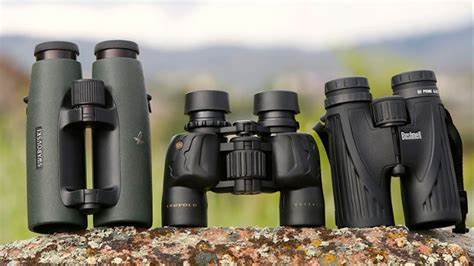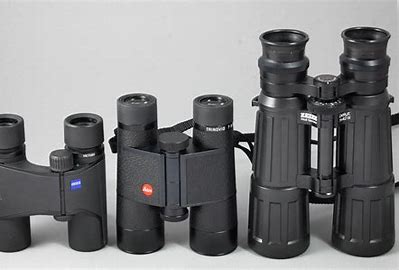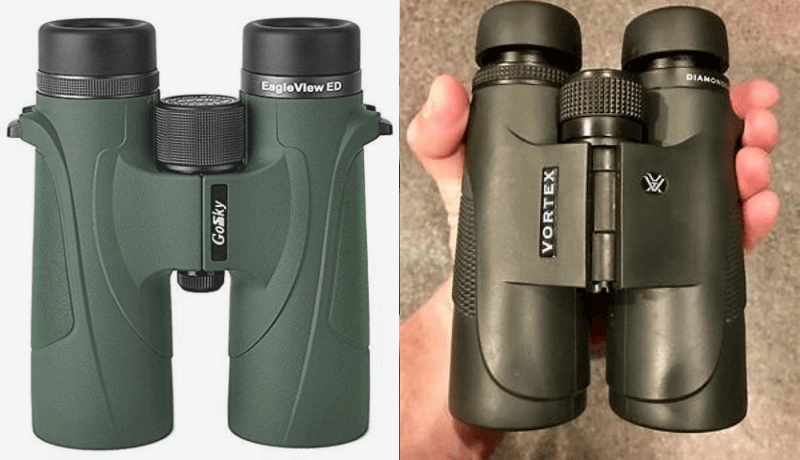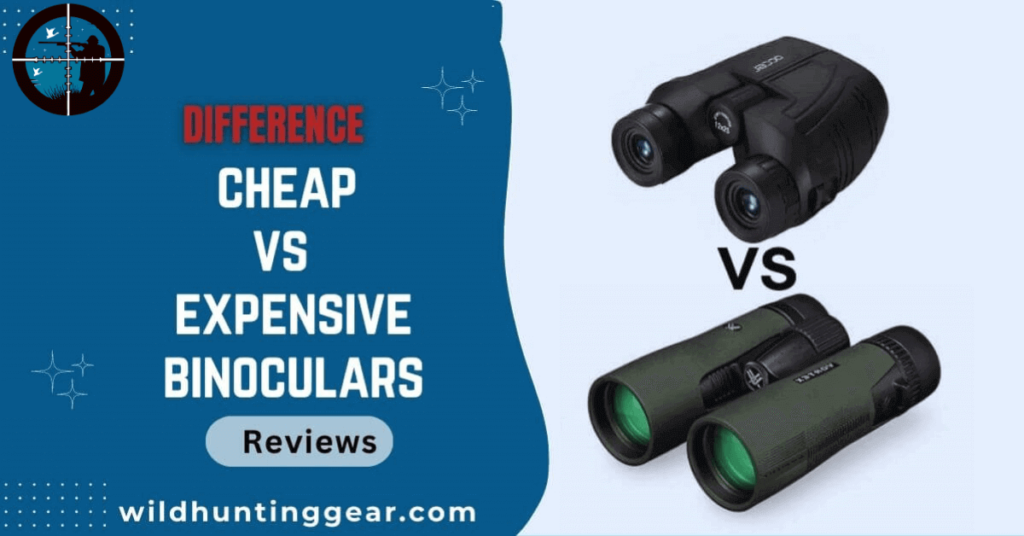When it comes to binoculars, the market offers a wide range of options to choose from, varying significantly in price. Binoculars are popular tools used for various activities, including birdwatching, stargazing, hunting and even professional applications like surveillance and wildlife observation.
One common dilemma for potential buyers is whether to opt for a cheaper or invest in a more expensive pair of binoculars. Are the expensive ones truly worth the investment or can you get by with a budget-friendly option?
Understanding the differences between cheap and expensive binoculars can help you make an informed decision and ensure that you choose a pair that suits your needs and preferences.
In this article, we will explore the key factors that set cheap and expensive binoculars apart, examining their build quality, optical performance and additional features. By the end, you’ll have a better understanding of the differences and be equipped to choose the right binoculars for your specific requirements.
Understanding the basics of binoculars
A. Optical system components:
- Objective lenses: These are the front lenses of binoculars that gather incoming light and focus it onto the prisms. They determine the amount of light and the quality of the image reaching your eyes.
- Prisms: Binoculars use prisms to correct the orientation of the image and provide a more compact design. The most common types of prisms used are Porro prisms and roof prisms.
- Eyepieces: The eyepieces are located at the back end of the binoculars and are responsible for magnifying the image formed by the objective lenses and delivering it to your eyes.
B. Magnification and field of view:
Magnification refers to how much larger an object appears when viewed through binoculars compared to the naked eye. Field of view refers to the width of the area visible through the binoculars at a specific distance.
Higher magnification reduces the field of view, while lower magnification provides a wider view.
C. Exit pupil and eye relief:
The exit pupil is the small circle of light you see when you hold the binoculars at arm’s length. It is determined by the diameter of the objective lenses divided by the magnification. A larger exit pupil allows more light to enter your eyes, making it easier to see in low-light conditions.
Eye relief is the distance between the eyepiece and your eye that allows you to see the entire field of view. It is important for those who wear glasses, as longer eye relief accommodates the extra distance created by the glasses.
D. Focus mechanisms:
Binoculars have focus mechanisms to adjust the clarity of the viewed image. There are two types: center focus and individual focus.
Center-focus binoculars have a single focus wheel that adjusts both eyepieces simultaneously. Individual focus binoculars have a diopter adjustment on each eyepiece, allowing you to fine-tune the focus for each eye independently.
Cheap Binoculars

1) Price range and affordability:
Cheap binoculars typically fall within a lower price range than their higher-end counterparts. The specific price range can vary but generally, you can find affordable binoculars priced anywhere from $20 to $200, depending on the brand, model and features.
2) Materials and build quality:
Since cheap binoculars are designed to be budget-friendly, they often utilize less expensive materials in their construction. The housing may be made of lightweight plastic instead of higher-quality materials like metal or magnesium alloy. While plastic can reduce costs, it may not offer the same level of durability and ruggedness as premium materials.
3) Optics and lens quality:
In terms of optics and lens quality, cheap binoculars generally have limitations compared to more expensive options. They may have lower-quality glass, resulting in less sharpness, clarity and color accuracy.
Cheaper binoculars also tend to have smaller objective lenses, which can affect their light-gathering capability and performance in low-light conditions.
4) Performance and limitations:
Cheap binoculars often have limited performance compared to higher-end models. They may have narrower fields of view, meaning you can see less of the scene at once.
The image quality may suffer at the edges of the field of view, with distortion or blurring. Cheap binoculars may also struggle with image stabilization, making it harder to achieve a steady view, especially at higher magnifications. Additionally, their focusing mechanisms may be less precise and harder to adjust.
5) Common issues or drawbacks:
Some common issues with cheap binoculars include chromatic aberration (color fringing), poor light transmission resulting in dim images and lower overall durability. Cheaper models may also be more prone to fogging or condensation in humid or wet conditions.
Their eyepieces might not be as comfortable or offer adjustable eye relief, making it harder to achieve an optimal viewing experience, particularly for eyeglass wearers.
It’s important to note that while cheap binoculars have their limitations, they can still provide a satisfactory viewing experience for casual or occasional use. However, if you have specific requirements or need higher optical performance, investing in a more expensive pair of binoculars would be recommended.
Related Article: What do the numbers on binoculars mean?
Expensive Binoculars

When it comes to binoculars, investing in a high-quality and expensive pair can make a significant difference in your viewing experience. Let’s explore some key aspects that make expensive binoculars stand out from the crowd.
1) Price range and investment value:
Expensive binoculars typically cost much more than budget models, with prices ranging from $200 to over $2,000. This can be a significant investment but you get what you pay for in terms of quality and performance.
Higher-end binoculars often offer better optics, including superior light transmission, color fidelity and clarity. They also tend to have larger objective lenses, better-focusing mechanisms and enhanced features like image stabilization.
2) High-quality materials and craftsmanship:
High-end binoculars are typically made with premium materials like magnesium alloy or metal, providing greater sturdiness and durability. They also often employ advanced optical designs to maximize performance, with intricate craftsmanship and attention to detail.
3) Superior optics and lens quality:
Expensive binoculars typically use high-quality glass components to produce crisp, clear images. They can also have larger objective lenses, which allow more light in for better low-light performance.
High-end binoculars also often come with special features like dielectric prism coatings, which greatly improve the color fidelity and brightness of the viewed image.
4) Enhanced performance and features:
Expensive binoculars often come with superior performance and advanced features, such as wider fields of view and image stabilization. They also tend to have faster focusing mechanisms than cheaper models, allowing for quick and precise adjustment in the field.
Many high-end binoculars are waterproof and fog proof, making them suitable for use in extreme weather conditions or rugged outdoor environments.
5) Longevity and durability:
Premium binoculars offer greater longevity than cheaper models, thanks to their advanced construction and robust materials. They are designed to endure significant wear and tear, making them a good choice for professional or frequent outdoor use.
6) Specialized applications and professional use:
Expensive binoculars are often used in specialized applications and professional settings, such as bird watching, astronomy, hunting and spotting. They provide superior performance in complex or demanding conditions that budget binoculars cannot match.
For these reasons, expensive binoculars can be a valuable investment for serious birders or hunters who need the highest quality and performance.
Comparison of cheap and expensive binoculars

Here is the comparison of cheap and expensive binoculars in table foam.
| Variable | Cheap Binoculars | Expensive Binoculars |
| Optics and Image Quality | Lower-quality glass results in less sharpness, clarity and color accuracy. Smaller objective lenses can affect light-gathering performance. | High-quality glass components produce crisp, clear images. Larger objective lenses allow more light in for better low-light performance. Special features like dielectric prism coatings improve color fidelity and brightness. |
| Durability and Lifespan | Lower overall durability. Prone to condensation in humid or wet conditions. | Made with premium materials like magnesium alloy or metal, providing greater sturdiness and durability. Waterproof and fog proof, suitable for extreme weather or rugged outdoor environments. |
| Comfort and Ergonomics | May not be as comfortable or offer adjustable eye relief, making it harder to achieve an optimal viewing experience. | High-end binoculars often come with adjustable eyecups and twist-up eye relief, allowing you to customize the fit for comfort and convenience. |
| Performance in Different Conditions | Poorer performance in difficult or demanding conditions. | Offers superior performance under difficult conditions, such as long distances or low light. Image stabilization features may help reduce blurring and improve clarity. |
| Overall Value for Different User Types and Needs | Budget binoculars can provide a satisfactory viewing experience for casual or occasional use. | A valuable investment for serious birders or hunters who need the highest quality and performance. Advanced features offer greater convenience and improved performance in challenging conditions. |
However choosing between cheap binoculars and expensive binoculars depends on your individual needs and preferences, as well as your budget.
Factors affecting the price of binoculars
When it comes to buying binoculars, there are a number of factors that can affect the price.
Here are some of the key considerations to keep in mind:
- Magnification and objective lens diameter: These two aspects work together to determine the power of a binocular, with higher magnifications resulting in more expensive models. Larger objective lenses also tend to be more expensive.
- Optical quality: The quality of the optical components, such as the lenses and prisms, can have a big impact on the price of binoculars. Higher-end models use superior materials that offer better image clarity and brightness.
- Construction material: Binoculars with metal or magnesium alloy construction are typically more expensive than those made with plastic.
- Special features: Binoculars with added features like image stabilization, wide fields of view and extended eye relief are usually more expensive than basic models.
- Brand name: The reputation of the manufacturer can influence the price tag, as binoculars from well-known brands tend to be priced higher than those from lesser-known companies.
- Accessories: Such as carrying cases, straps and cleaning supplies, can add to the cost of a binocular purchase.
- Warranty: High-end binoculars often come with longer warranties, which can affect the price.
By taking these factors into account, you can find the right binoculars to suit your needs and budget.
How to choose the right binoculars for your needs?
Choosing the right binoculars for your needs can be a daunting task. Here are some tips to help you make the best choice:
- Consider your budget:
You should first decide how much you are willing to spend on binoculars. Keep in mind that higher-end models tend to offer superior performance and features but may not be necessary for your particular application.
- Assess your needs:
Think about what type of activities you intend to use binoculars for, such as bird watching, hunting or stargazing. This will help you determine which features and specifications are important for your needs.
- Understanding trade-offs between price and quality:
Cheaper binoculars may be more affordable but they tend to lack the clarity and performance of higher-end models. Keep in mind that you often get what you pay for when it comes to binoculars.
- Research different brands:
Compare reviews and ratings from different manufacturers to understand their strengths and weaknesses. This can help you make an informed decision and find the right binoculars for you.
- Seeking expert advice and reading reviews:
If you are still unsure which binoculars to buy, consider seeking advice from an expert or reading reviews from other users. This can help you find the right binoculars for your needs and budget.
By keeping these tips in mind, you can make the best decision when it comes to choosing binoculars. With the right pair of binoculars, you can enjoy a whole new level of viewing experience!
Conclusion:
In conclusion, when comparing cheap and expensive binoculars, there are distinct differences in terms of quality, performance and durability.
While cheap binoculars may offer affordability, they often compromise on optical clarity, build quality and additional features. On the other hand, expensive binoculars generally provide superior optical performance, high-quality materials and advanced features that enhance the overall viewing experience.
However, it is important to consider individual needs, budgets and specific use cases when deciding between cheap and expensive binoculars. It is possible to find mid-range options that offer a balance between affordability and quality, catering to a wide range of users with different requirements.




